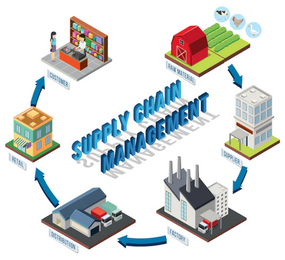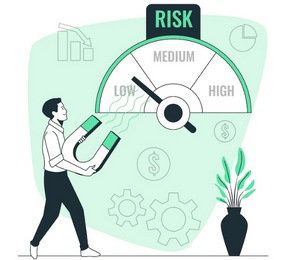Given the shift to the cloud and the globalisation of the computing power behind such services, one of the major difficulties many businesses face today is understanding their digital supply chain risk. Recommendations on handling the additional detailing of the supply chain, which might be part of any significant applications;
-
As part of their digital supply chain, make sure that COTS, third-party suppliers, and SaaS are documented on the security context diagram, threat model, central master database (CMDB), and any other sources of record.
-
Making sure that these dependencies are captured will aid in improving the identification of supply chain risks, developing threat models that could potentially mitigate those risks, and performing a variety of other detection and response activities.
The digital supply chain refers to the interconnected network of entities involved in the creation, production, and distribution of digital products and services. This includes the procurement of raw materials, the design and development of products, their manufacture and assembly, distribution to customers, and post-sales support and maintenance.
Like any supply chain, the digital supply chain is subject to a number of risks, including:
Cybersecurity risks: Cyberattacks and data breaches can disrupt the flow of information and commerce within the digital supply chain.
Intellectual property risks: Digital products and services often rely on proprietary software and technologies, which can be vulnerable to theft or infringement.
Technical risks: The rapid pace of technological change in the digital realm can lead to obsolescence or compatibility issues with new hardware and software systems.
Dependency risks: The digital supply chain relies on a complex network of suppliers, manufacturers, and distributors, which can be disrupted by a failure or disruption at any single point in the chain.
Regulatory risks: Changes in laws and regulations can impact the development and distribution of digital products and services, such as privacy and data protection laws.
Organisations can manage these risks by implementing strong cybersecurity measures, securing intellectual property rights, ensuring that their systems are compatible with new technologies, carefully managing dependencies within the supply chain, and staying informed about changes in regulations that could impact their operations.
Find out more on “Digital Supply Chain Risk” on 30th - 31st may, 2023 at the Supply Chain Risk and Resilience Forum, in Berlin, Germany so you don't feel left out in the industry!
To register or learn more about the Forum please check here: https://bit.ly/3DsfWE4
For more information and group participation, contact us: [email protected]
















